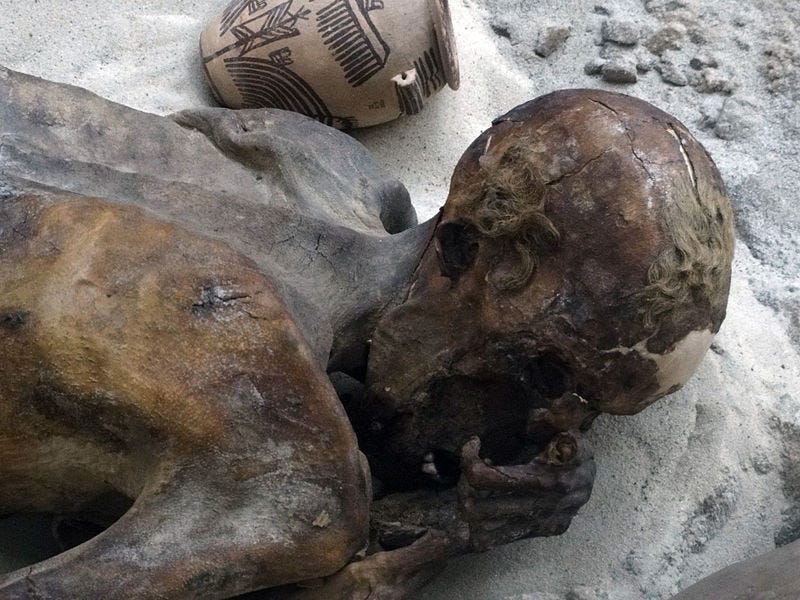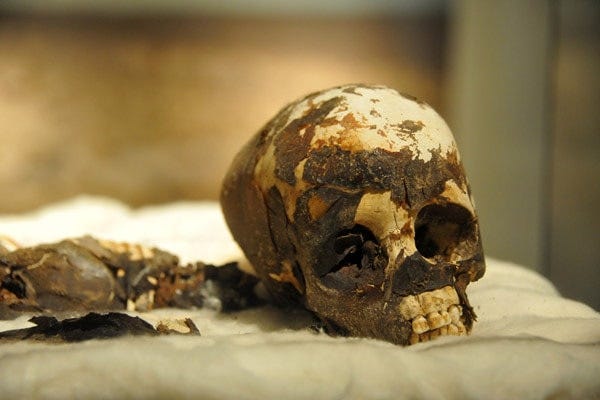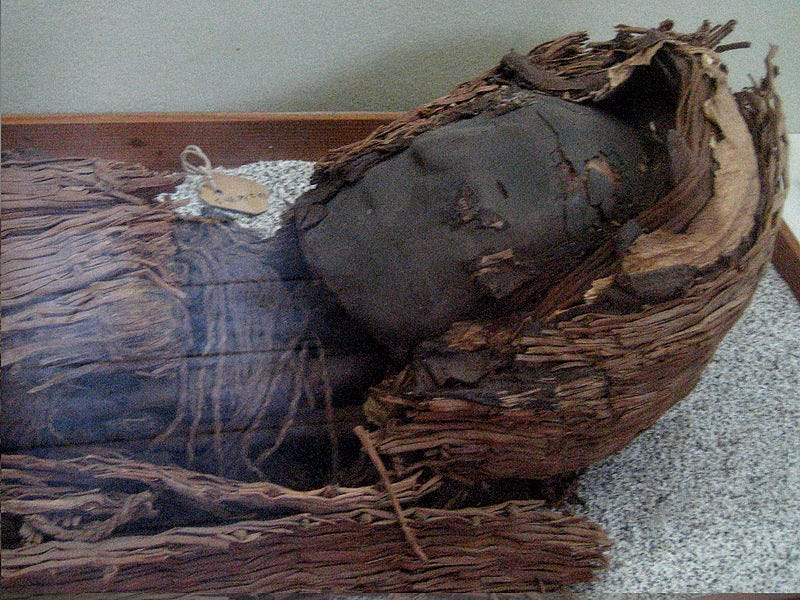Exploring the Oldest Mummies in Human History
Written on
When one imagines ancient mummies, the iconic Egyptian remains often come to mind, or perhaps the famous Iceman Otzi, unearthed in the Alps in 1991. Though Otzi is older than many Egyptian mummies, he is not the oldest. The title for the oldest mummy belongs to a specimen that is around 9,400 years old! Its origin may surprise you.
Our exploration begins in Egypt, the legendary land of the Pharaohs.
Gebelein Mummies, Egypt (over 5,400 years old)

In the remote Egyptian desert, six ancient mummies were discovered, undisturbed for millennia, buried in shallow graves. In the late 1800s, Egyptologist Wallis Budge made a groundbreaking discovery near Gebelein, now recognized as Naga el-Gherira. These mummies, the first complete pre-dynastic bodies ever found, date back to approximately 3400 BC.
Despite the harsh environment, the bodies were naturally mummified, preserving their features remarkably well. Budge identified two males, one female, and the rest as unidentified. All the mummies were found lying on their left sides in a fetal position. The British Museum currently houses these ancient remains, with three bodies covered in various materials like reed, palm fiber, and animal skin.
The first mummy excavated, known as "Ginger" due to his red hair, has been exhibited at the British Museum since 1901, although the nickname is no longer in use. A recent CT scan revealed a shocking fact about the Gebelein Man: he was murdered. The scan, conducted at Cromwell Hospital, indicated that the muscular man was around 18 to 20 years old at death, with a surprise attack evidenced by a puncture wound beneath his left shoulder blade.
Moving on, our next mummy is not from Egypt but from Africa.
Tashwinat Mummy, Libya (over 5,600 years old)

Located in the Acacus Mountains of Libya, a small cave at Uan Muhuggiag holds a significant historical treasure. Here, Professor Fabrizio Mori found the Tashwinat mummy in 1958, a child wrapped in goatskin with wild herbs placed inside for preservation.
This find is one of the earliest known mummies globally, estimated to be between 5,400 and 5,600 years old, predating even the oldest Egyptian mummies. Researchers speculate that ancient cattle herders from the Sahara may have been responsible for the mummification techniques. The Tashwinat mummy, which is in the Assaraya Alhamra Museum in Tripoli, was positioned in a fetal stance and wrapped in antelope skin and leaves, preserving its state for over five millennia.
Next, we venture to the New World in search of the oldest mummy.
Chinchorro Mummies, Chile (over 7,000 years old)

In the coastal town of Arica, Chile, the Chinchorro civilization thrived long before European colonization. In July 2021, UNESCO recognized the Chinchorro mummies as a World Heritage site, highlighting their unique culture.
German archaeologist Max Uhle documented these mummies in 1917, discovering preserved bodies on a beach. Radiocarbon dating revealed their age to exceed 7,000 years, making them the oldest known artificially mummified bodies. Unlike the Egyptians, the Chinchorro employed different methods for preservation, such as removing organs, drying the body cavities, and then filling them with natural materials.
The Chinchorro people mummified individuals of all ages and social statuses, contrasting with the Egyptian custom of reserving elaborate mummification for elites.
Yet, as we search for the oldest mummy, the Chinchorro cannot claim the title. A recent discovery in Europe challenges the status of Otzi as the oldest mummy.
Sado Valley Mummies, Portugal (over 8,000 years old)

In the Sado Valley of southern Portugal, evidence suggests that intentional mummification occurred around 8,000 years ago, marking the oldest known case of this practice in Europe. Researchers utilized archaeothanatology and human decomposition studies to uncover details about these mummies.
The findings indicate that the inhabitants of the Sado Valley dried the bodies before burial, preserving their structure. Though older than the Chinchorro mummies, this discovery does not hold the title of the oldest mummy.
The search continues in North America for the earliest known mummy.
Spirit Cave Mummy (over 9,400 years old)

Nestled in the Lahontan Valley of Nevada, the Spirit Cave remained largely unexplored until 1940 when archaeologists Sydney and Georgia Wheeler conducted excavations due to concerns over guano mining.
During their exploration, they discovered two bodies wrapped in tule mats, along with numerous artifacts. The second body, better preserved than the first, was partially mummified by the desert’s heat, allowing for the preservation of hair and facial features.
Studies revealed this individual was between 45 and 55 years old at death and stood approximately 5 feet tall. Intriguingly, fish bones were found within the mummified remains. In 1996, analysis dated the Spirit Cave mummy to around 9,400 years ago, making it the oldest mummy ever discovered.
What are your thoughts on these ancient mummies? Are there any significant finds that you believe deserve attention in the quest for the world's oldest mummy? Share your thoughts in the comments.
Among the mummies discussed, both artificially and naturally preserved specimens were highlighted. Additionally, one unique case involves a Buddhist monk in India who managed to preserve his body for over 500 years through a rare technique.
Interested in learning more? Check out this fascinating story.